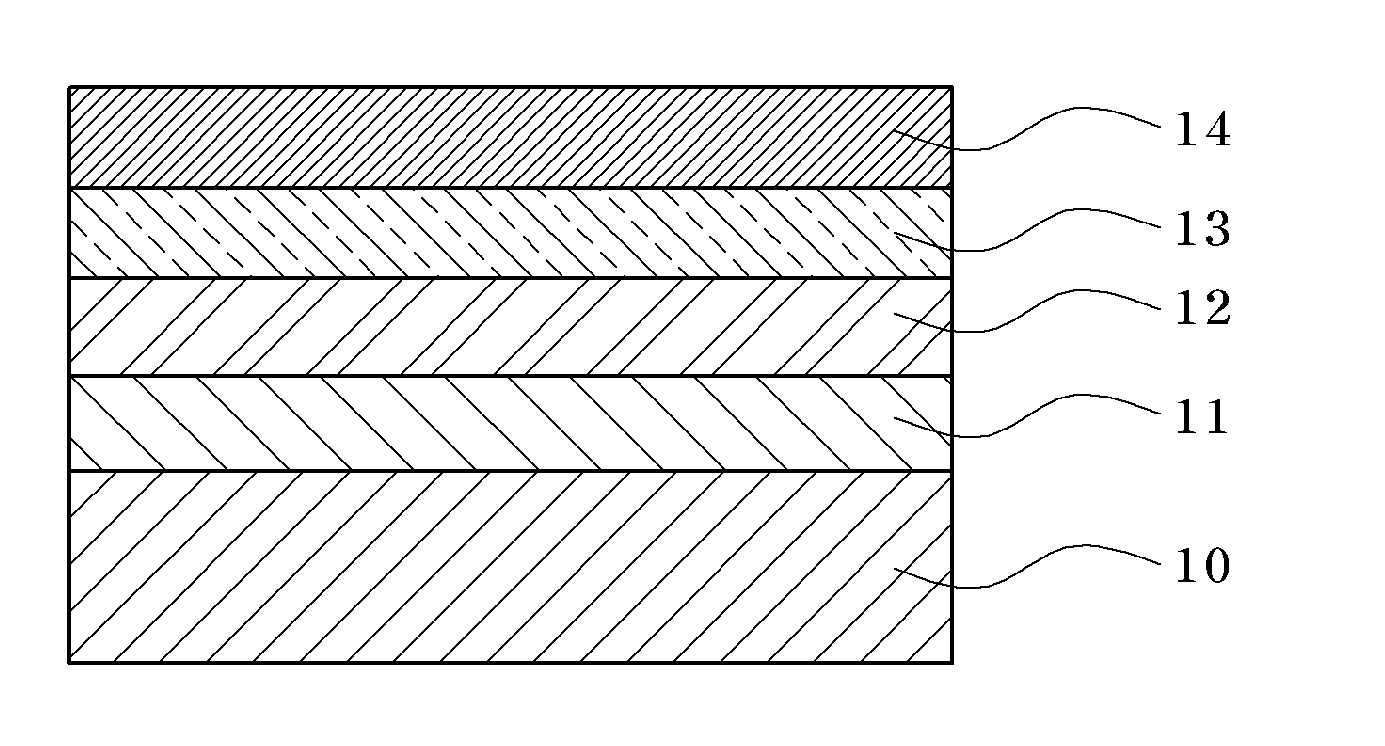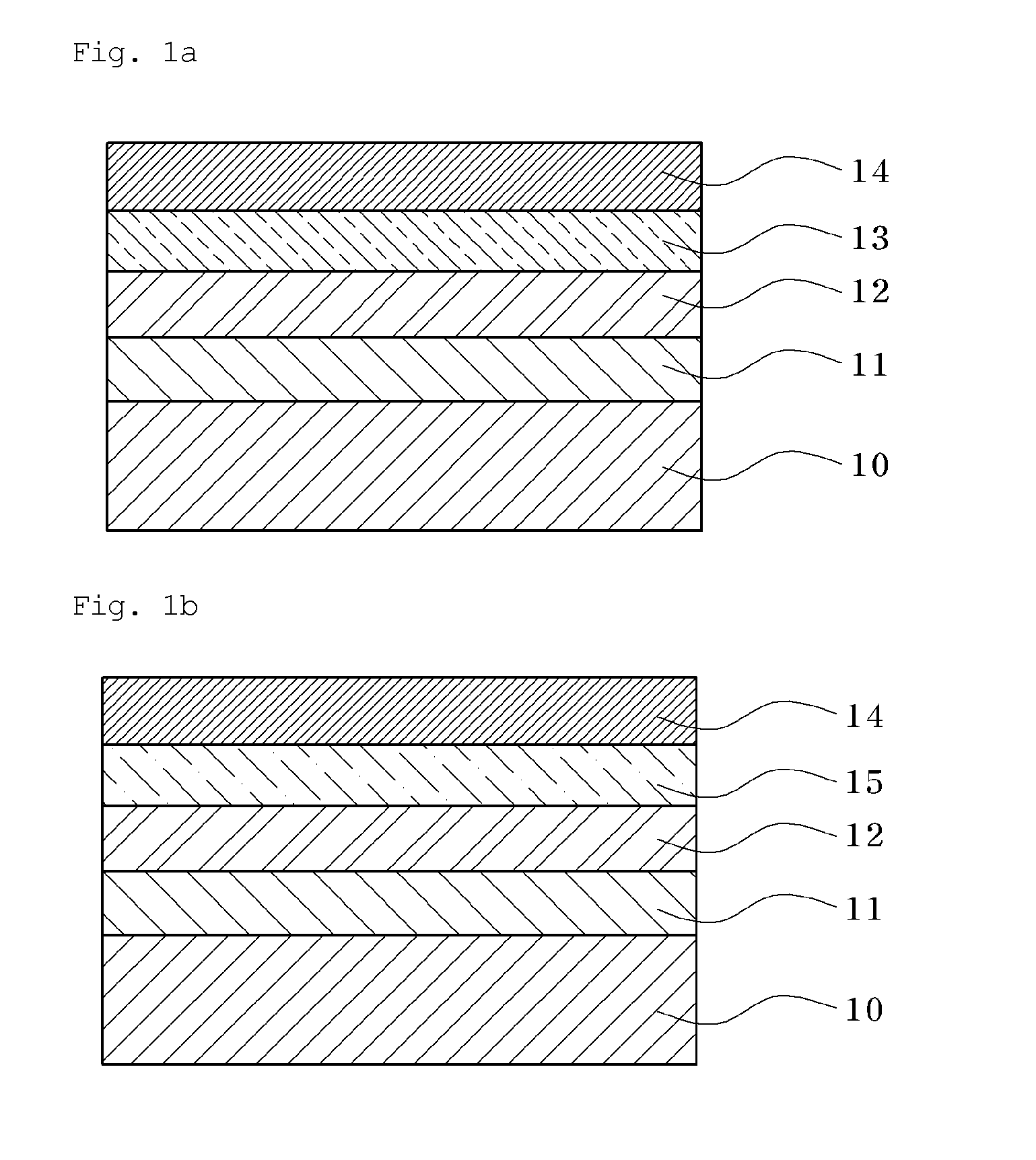Conductive Copolymer, Conductive Copolymer Composition, Film and Opto-Electronic Device Using the Same
a technology of conductive copolymer and composition, which is applied in the direction of metal/alloy conductors, non-metal conductors, conductors, etc., can solve the problems of deterioration in the efficiency and lifetime of oleds, slow response speed, and narrow viewing angle, so as to reduce the concentration of polyacids in a molecule, prevent water absorption, and improve the effect of film characteristics
- Summary
- Abstract
- Description
- Claims
- Application Information
AI Technical Summary
Benefits of technology
Problems solved by technology
Method used
Image
Examples
example 1
Preparation of Styrenesulfonic Acid-Pentafluorostyrene Copolymer
[0107]48 g of sodium styrenesulfonate (SSNa) (available from Sigma-Aldrich Corp.) and 2.5 g of pentafluorostyrene (PFS) are fully dissolved in 0.6 L of dimethylsulfoxide (DMSO) with heating. Then, 0.3 g of azobisisobutyronitrile (AIBN) is added dropwise to the DMSO solution. The monomers are polymerized for 24 hours or more. The polymerization is carried out varying the content of pentafluorostyrene (PFS) (5, 10, and 20 wt %). The reaction product is allowed to sit at ambient temperature. Then, a precipitate is colleted from the reaction product and filtered with a filter to obtain a poly(styrenesulfonate-pentafluorostyrene) copolymer {P(SSNa-co-PFS)).
[0108]The copolymer thus obtained is reacted with an ionic exchange resin to yield a poly(styrenesulfonic acid-pentafluorostyrene copolymer {P(SSA-co-PFS)) of Formula 19 below:
wherein m and n are as defined herein.
example 2
Preparation of Styrenesulfonic Acid-Perfluorooctene Copolymer
[0109]16 g of sodium styrenesulfonate (SSNa) (available from Sigma-Aldrich Corp.) and 4 g of perfluorooctene (1H,1H,2H-perfluoro-1-octene) are fully dissolved in 0.24 L of dimethylsulfoxide (DMSO) with heating. Then, 0.1 g of azobisisobutyronitrile (AIBN) is added dropwise to the DMSO solution. The monomers are polymerized for 24 hours or more. The polymerization is carried out varying the content of perfluorooctene (5, 10, and 20 wt %). The reaction product is allowed to sit at ambient temperature. Then, a precipitate is colleted from the reaction product and filtered with a filter to obtain a poly(styrenesulfonate-perfluorooctene) copolymer {P(SSNa-co-PFO)).
[0110]The copolymer thus obtained is reacted with an ionic exchange resin to yield a poly(styrenesulfonic acid-perfluorooctene copolymer {P(SSA-co-PFO)) of Formula 20 below:
[0111]wherein m and n are as defined herein.
example 3
Preparation of Styrenesulfonic Acid-Branched Perfluorooctene Copolymer
[0112]19 g of sodium styrenesulfonate (SSNa) (available from Sigma-Aldrich Corp.) and 1 g of branched perfluorooctene (heptafluoro-3,3-bis(trifluoromethyl)-1-hexene) are fully dissolved in 0.24 L of dimethylsulfoxide (DMSO) with heating. Then, 0.1 g of azobisisobutyronitrile (AIBN) is added dropwise to the DMSO solution. The monomers are polymerized for 24 hours or more. The polymerization is carried out varying the content of the branched perfluorooctene (5, 10, and 20 wt %).
[0113]The reaction product is allowed to sit at ambient temperature. Then, a precipitate is colleted from the reaction product, and filtered with a filter to obtain a poly(styrenesulfonate-branched perfluorooctene) copolymer {P(SSNa-co-BPFO)).
[0114]The copolymer thus obtained is reacted with an ionic exchange resin to yield a poly(styrenesulfonic acid-branched perfluorooctene copolymer {P(SSA-co-BPFO)) of Formula 21 below:
[0115]wherein m and ...
PUM
| Property | Measurement | Unit |
|---|---|---|
| Fraction | aaaaa | aaaaa |
| Percent by mass | aaaaa | aaaaa |
| Percent by mass | aaaaa | aaaaa |
Abstract
Description
Claims
Application Information
 Login to View More
Login to View More - R&D
- Intellectual Property
- Life Sciences
- Materials
- Tech Scout
- Unparalleled Data Quality
- Higher Quality Content
- 60% Fewer Hallucinations
Browse by: Latest US Patents, China's latest patents, Technical Efficacy Thesaurus, Application Domain, Technology Topic, Popular Technical Reports.
© 2025 PatSnap. All rights reserved.Legal|Privacy policy|Modern Slavery Act Transparency Statement|Sitemap|About US| Contact US: help@patsnap.com



